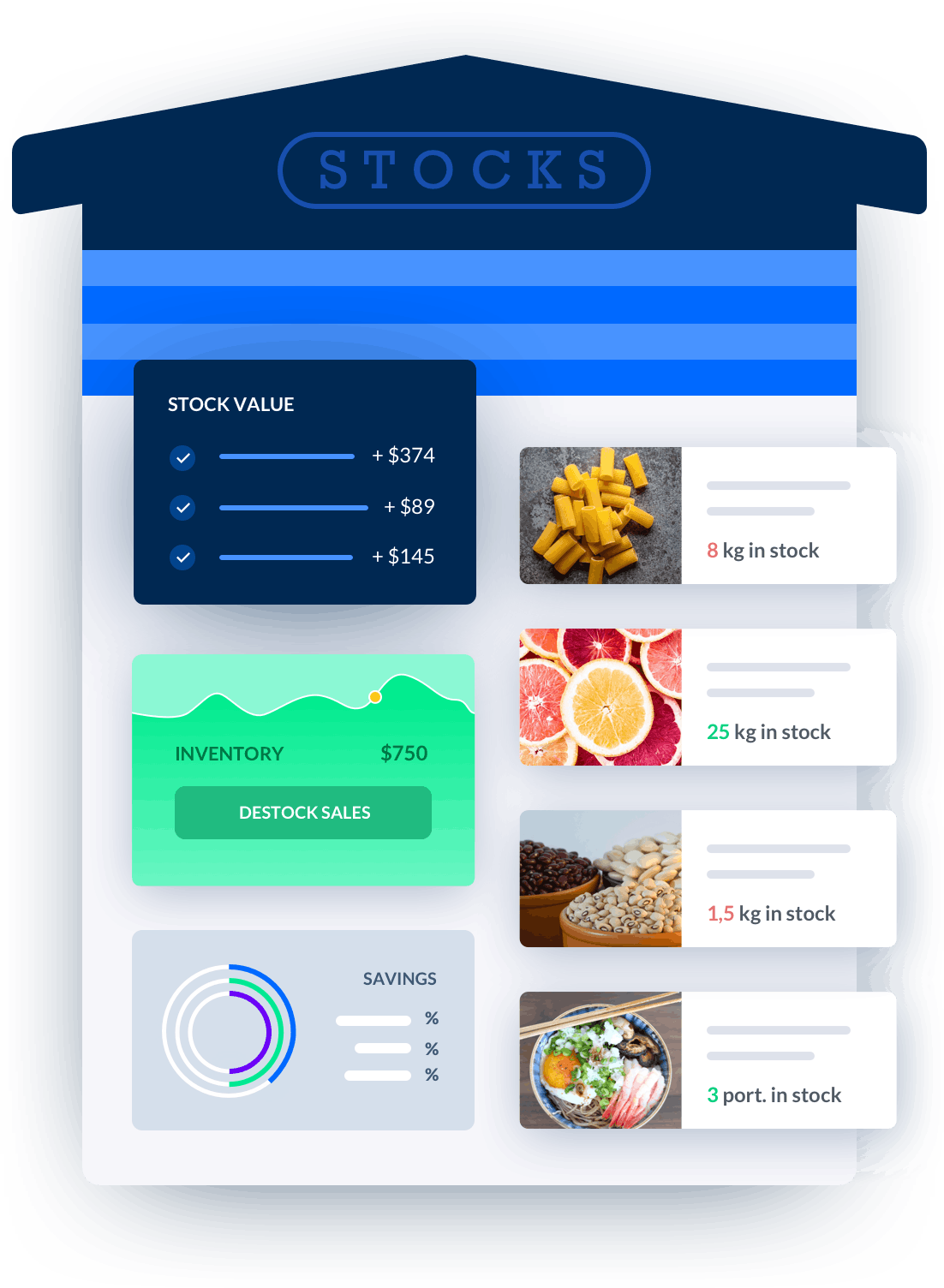coffee shop inventory spreadsheet
When it comes to managing a coffee shop, keeping track of inventory is of utmost importance.A coffee shop inventory spreadsheet can be a valuable tool in ensuring that you have a clear understanding of the items you have in stock, their quantities, and their cost.

Melba: inventory management software
Discover how to optimize your inventory management with melba

Inventory management in catering, increase your cash flow
Good inventory management in food service helps to avoid waste, ensure that demand can be met, and avoid tying up cash. Find out how to optimize your inventory in this article!
When it comes to managing a coffee shop, keeping track of inventory is of utmost importance. A coffee shop inventory spreadsheet can be a valuable tool in ensuring that you have a clear understanding of the items you have in stock, their quantities, and their cost. In this article, we will explore the importance of using a coffee shop inventory spreadsheet and provide you with some tips on how to create and maintain one effectively.
The Importance of a Coffee Shop Inventory Spreadsheet
Having a well-organized coffee shop inventory spreadsheet can offer numerous benefits for your business. Let's take a look at some of the key reasons why it is essential:
- Accurate Inventory Management: A coffee shop inventory spreadsheet allows you to keep track of the items you have in stock, ensuring that you don't run out of essential supplies. By maintaining accurate records, you can avoid overstocking or understocking items, thus optimizing your inventory levels.
- Cost Control: With an inventory spreadsheet, you can track the cost of each item, enabling you to monitor your expenses and make informed decisions about pricing and purchasing. This can help you identify cost-saving opportunities and improve your overall profitability.
- Identifying Trends: By reviewing your inventory spreadsheet regularly, you can identify patterns and trends in terms of product popularity and demand. This information can guide you in making strategic decisions, such as introducing new products or adjusting your menu to cater to customer preferences.
- Streamlined Ordering Process: An inventory spreadsheet simplifies the ordering process by providing you with a clear overview of the items that need to be restocked. This ensures that you can place orders in a timely manner, avoiding any disruptions in your operations.
- Minimizing Losses: By closely monitoring your inventory through a spreadsheet, you can detect any discrepancies, such as theft or wastage, and take appropriate actions to minimize losses. This can help you maintain a high level of control and accountability within your coffee shop.
Creating a Coffee Shop Inventory Spreadsheet
Now that we understand the importance of a coffee shop inventory spreadsheet, let's explore how you can create one effectively:
1. Determine the Categories
Start by identifying the main categories of items that you stock in your coffee shop. This can include coffee beans, tea leaves, syrups, dairy products, baked goods, and various other supplies. By organizing your inventory into logical categories, you can easily locate items and maintain a systematic record.
2. List the Items
Next, create a comprehensive list of all the items within each category. Be sure to include details such as the item name, brand, size, unit cost, and quantity on hand. You may also consider adding additional columns for reorder points and supplier information.
3. Set Up Formulas
To streamline your inventory management process, utilize formulas within your spreadsheet. For example, you can calculate the total value of each item by multiplying the unit cost with the quantity on hand. This will provide you with real-time information on the value of your inventory.
4. Update Regularly
Consistency is key when it comes to maintaining an accurate inventory spreadsheet. Make it a habit to update the spreadsheet regularly, preferably on a daily basis. This will ensure that you always have up-to-date information and can make informed decisions based on accurate data.
Best Practices for Coffee Shop Inventory Management
Now that you have your coffee shop inventory spreadsheet set up, let's take a look at some best practices to help you effectively manage your inventory:
1. Conduct Regular Audits
Performing periodic inventory audits is crucial to verify the accuracy of your spreadsheet. This involves physically counting and reconciling the items in stock with the recorded quantities. It is recommended to conduct audits at least once a month to catch any discrepancies early on.
2. Track Expiry Dates
For perishable items such as dairy products and baked goods, it is essential to track their expiry dates. Make sure to note down the expiry date in your spreadsheet and prioritize using these items before they expire. This will help prevent unnecessary wastage and maintain the quality of your offerings.
3. Implement First-In, First-Out (FIFO) Method
When restocking your inventory, follow the FIFO method, which means using the oldest items first. This ensures that items with shorter shelf lives are utilized before newer ones, reducing the risk of spoilage and minimizing potential losses.
4. Establish Reorder Points
By setting up reorder points in your inventory spreadsheet, you can proactively restock items before they run out. Determine the minimum quantity you need to have on hand for each item and set a reorder point slightly above that to avoid any stockouts.
5. Analyze Sales Data
Regularly analyze your sales data to identify any trends or changes in customer preferences. This information can help you adjust your inventory levels and offerings accordingly, ensuring that you are meeting the demands of your customers effectively.
By following these best practices and utilizing a coffee shop inventory spreadsheet, you can streamline your operations, optimize your inventory management, and ultimately enhance the overall efficiency and profitability of your coffee shop.






